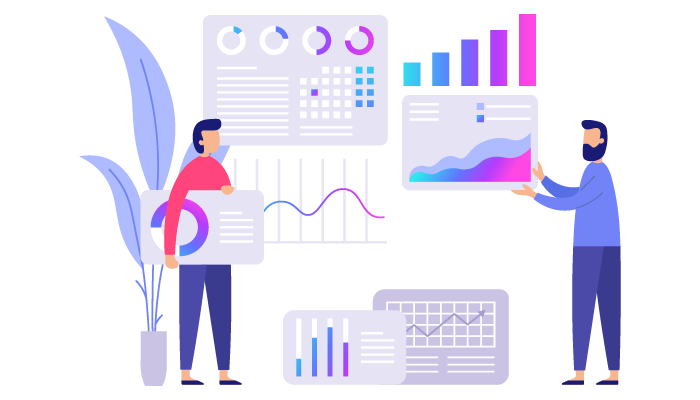After coming out of a very change-heavy two years, an anticipated trend for call centers in 2022 is an increased focus on workforce management.
With remote work becoming a permanent fixture of the contact center industry, proper staffing and scheduling is trickier than ever. Keeping tabs on agents in many different locations is no easy task, let alone ensuring that the right number of staff are scheduled to work at the right times.
That’s where call center forecasting comes in handy. Using historical data, call center forecasting finds patterns in contact volume to help you predict future levels. If you know what days and times are likely to be busy or slow, it’s much easier to staff accordingly. An accurate forecast can lead to a decrease in staffing costs, an increase in agent retention, improved CSat scores, and more engaged and efficient employees overall—the rewards are well worth the work.
Although forecasting call volume can be tough, there are many ways you might choose to go about it. Here are some of the more common methods we’ve come across.
5 Common Call Center Forecasting Methods
1. Long-term forecasting.
When it comes to call center forecasting, you can analyze data collected as far back as you’d like. Comparing numbers from years past can reveal a lot that you may not already know, particularly about specific trends and seasonality. For example, you may notice a decrease in calls around certain holidays like Mother’s Day or a long weekend and then a sharp increase the day after the holiday. If this pattern persists from year to year to year, you have a good idea that it’ll likely continue to happen.
2.Short-term forecasting.
As much as long-term forecasting can be incredibly insightful, short-term forecasting also has its place. Let’s say your call center offers a repeating discount on a service that comes into effect at different times throughout the year. Short-term forecasting allows you to see what the call volume is like during those periods so you can staff appropriately the next time the discount is on. Plus, short-term forecasting may be the only option if your company is just starting out.
3.Triple exponential smoothing.
Using the triple exponential smoothing forecasting method takes levels, trends, and seasonality into account, providing you with a forecast that puts greater weight on the most recent data in a set. As a simple example, say you’re looking at the past three months. Triple exponential smoothing may weight the most recent month at 1/2, the month before that at 1/4, and the final month at 1/8. It takes historical data into account while also recognizing changes over time.
FACT:
Keep in mind that triple exponential smoothing is generally only used for long-term forecasting and doesn’t really work for day-to-day predictions.
4. Neural networks.
How do we know the future is now? Artificial intelligence has neural networks that mimic human brain neurons, and they’re able to use them to help determine your call center forecasting. Although statistically 10% of call centers still forecast with pen and paper, we’re happy to let the tech take control. It’ll save you time and ensure your forecast accuracy stays on point.
5. Autoregressive integrated moving average (ARIMA).
Arguably one of the most complex forecasting models around, ARIMA uses historical data to illuminate current trends within your statistical data and make predictions of what’s to come.
TIP:
Oftentimes, call center managers will use two, three, or even four forecasting models at a time, depending on their specific business needs—never feel limited to using just one.
How Can I Determine if My Forecasting is Working?
After diving in for a period of time (we recommend monitoring your numbers over the course of a quarter), compare your predictions with your actual numbers to see if your forecasting method has been successful. A simple equation can work for this:
X – Y = Z Z / X = A A x 100 = B% X is your actual number of calls Y is your forecasted number of calls B is the percentage difference between your reality and your prediction
Once you’ve determined whether your method is working for your call center, you can make adjustments so it evolves with your business needs.

The Executive Guide to Improving 6 Call Center Metrics
Measuring and improving call center metrics can be a pain point for executives. Download our free guide to help you improve 6 key call center metrics.
